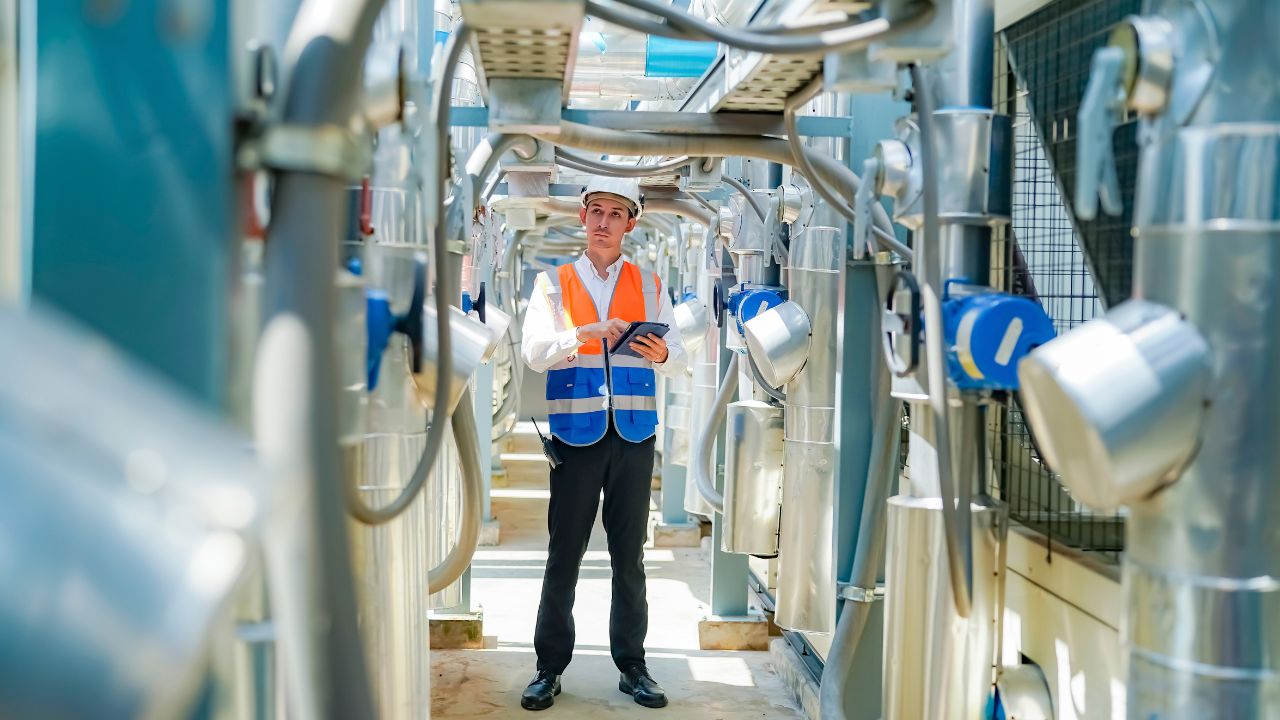Facilities management (FM) is more than maintenance and operations—it’s also the frontline of workplace health and safety. In commercial properties, the FM team is usually the one coordinating contractors, overseeing repairs, managing site access, and operating equipment. That places them in direct control of many risk areas, including fire protection systems, electrical safety, fall hazards, water quality, and emergency planning.
Because of this proximity to daily hazards and critical systems, facility managers are often designated as “responsible persons” under local, state, or federal safety laws. That includes OSHA in the U.S., Health and Safety at Work regulations in the UK, and similar requirements elsewhere.
Whether those responsibilities are spelled out in job titles or not, the FM team is typically expected to help ensure that legal safety standards are met across the site. When incidents occur—like a slip and fall or mechanical failure—authorities often look at how the facility was being managed and whether reasonable steps were taken to prevent harm.
Legal Duties That Can’t Be Delegated Away
Certain legal responsibilities rest squarely with the facility or property owner, but day-to-day enforcement typically falls to the FM team. That includes ensuring safe working conditions for both employees and contractors, complying with building code and life safety requirements, and managing documentation around inspections, permits, and risk assessments.
In most jurisdictions, failure to maintain equipment that contributes to an injury can expose the organization to legal and financial risk—even criminal charges in serious cases. For example, if a fire suppression system isn’t inspected as required and someone is injured during an emergency, the facility operator may be held accountable depending on the circumstances. Likewise, delays or oversights in lift inspections, boiler certifications, or emergency lighting can result in preventable violations or penalties.
Permits and certifications also come into play. A commercial kitchen, mechanical plant, or elevator system typically requires regular inspections that must be documented and kept available for audits. Overlooking those inspections or failing to resolve flagged deficiencies increases exposure to compliance risks.
Another legal requirement is the proper handling of contractors. Under many regulations, contractors are treated the same as employees when it comes to site safety. This means the FM team often has to verify that contractors are properly trained, insured, and operating safely—regardless of how short their visit is. Assuming a contractor “knows what they’re doing” may not be a sufficient defense if safety protocols weren’t followed.
Building Systems and Their Safety Implications
Mechanical, electrical, and plumbing systems all carry specific safety obligations. For example, HVAC systems must meet indoor air quality standards, particularly in facilities with high occupancy or sensitive operations. Filters, ventilation rates, and air distribution systems need to be maintained according to manufacturer specs and updated guidance on workplace health—especially since airborne illness transmission became a heightened concern.
Electrical systems must be inspected and maintained to prevent overloads, grounding failures, or arc flash risks. Facility teams generally oversee lockout/tagout procedures, ensure equipment is properly labeled, and confirm access areas remain safe and compliant.
Fire life safety systems—sprinklers, extinguishers, alarms, smoke control, egress lighting—require recurring inspections by licensed professionals. FM is typically tasked with coordinating inspections, keeping records, and ensuring follow-up on identified issues. Passive systems such as fire doors, exit signage, and compartmentalization are also within the FM team’s oversight. Issues like blocked exits or expired batteries in emergency lighting are common areas of risk that can lead to enforcement actions.
Water systems, including cooling towers and domestic plumbing, also carry safety risks such as Legionella if improperly maintained. Testing and flushing programs should be documented and managed with the same diligence as other life safety systems.
Managing Contractor Safety and Site Control
Facility managers rarely handle every task in-house. That means outside vendors, contractors, and service providers are constantly rotating through the building. Whether it’s an elevator tech, pest control, HVAC maintenance, or construction crews, each presents a new set of risks.
To manage those risks, the FM team must implement contractor safety protocols that begin before anyone arrives on site. That includes prequalification processes, certificate of insurance checks, safety policy reviews, and signed agreements confirming site rules. Once work begins, contractors must be briefed on site-specific hazards, emergency procedures, and permit requirements—especially if hot work, confined space entry, or rooftop access is involved.

Contractor orientation is more than a formality—it’s part of demonstrating reasonable care. When incidents happen, having a signed safety briefing, work plan, and access log provides a key part of the organization’s due diligence.
Supervision also matters. Even with experienced vendors, someone from FM should verify that safety measures are in place and that operations remain within scope. Contractor-related incidents are a frequent challenge, especially when multiple jobs overlap or take place during off-hours.
Safety Protocols That Need to Be Embedded in Daily Operations
Health and safety management isn’t just about inspections and emergency plans—it’s about culture. Facility teams must bake safety into daily routines and service workflows. That includes:
- Daily or weekly site walks to identify hazards like spills, blocked exits, or exposed wiring
- Checklists for equipment rooms to confirm that panels are closed, signage is intact, and nothing is stored in prohibited areas
- Documentation for ladder use, confined space entry, and any non-routine task that carries risk
- Incident reporting protocols for slips, trips, falls, and near misses, even if no one was hurt
- Regular reviews of MSDS sheets and chemical storage areas, particularly in janitorial or mechanical zones
Many facility managers implement a safety board or dashboard in shared work areas to track open issues, display inspection logs, and share updates. Toolbox talks, even if brief, help keep staff and contractors aligned on what’s expected. Equally important: enforcing those standards. If protective gear is required for a task, enforcement should be consistent—no exceptions.
This kind of consistency not only supports compliance—it also builds confidence among occupants, vendors, and regulators.
Consistency builds trust with building occupants, vendors, and inspectors. It also reduces incidents, which keeps insurance costs and regulatory scrutiny in check.
Emergency Preparedness and Incident Response
Facilities teams also carry primary responsibility for emergency procedures. That includes fire evacuations, medical response, severe weather actions, and utility failure plans. FM must maintain the emergency contact lists, post evacuation maps, train staff on alarm systems, and coordinate with local responders when necessary.
Regular drills are essential—not just for occupants, but for the facility staff and security team. Knowing who does what when a sprinkler head activates or when the fire alarm goes off is not something that should be figured out in real time. After-action reviews help refine these protocols and identify weak spots.
In critical environments like data centers or medical buildings, emergency procedures must go beyond evacuation. Contingency plans should include generator start-up protocols, mechanical system resets, emergency vendor contacts, and detailed roles for staff during off-hours events.
Incident response also involves documentation. Every emergency or near miss should be logged, investigated, and reviewed. If a serious injury occurs, authorities will expect a full timeline, including maintenance logs, contractor work records, and safety inspection results. That kind of preparedness doesn’t happen without a solid FM-led system.






